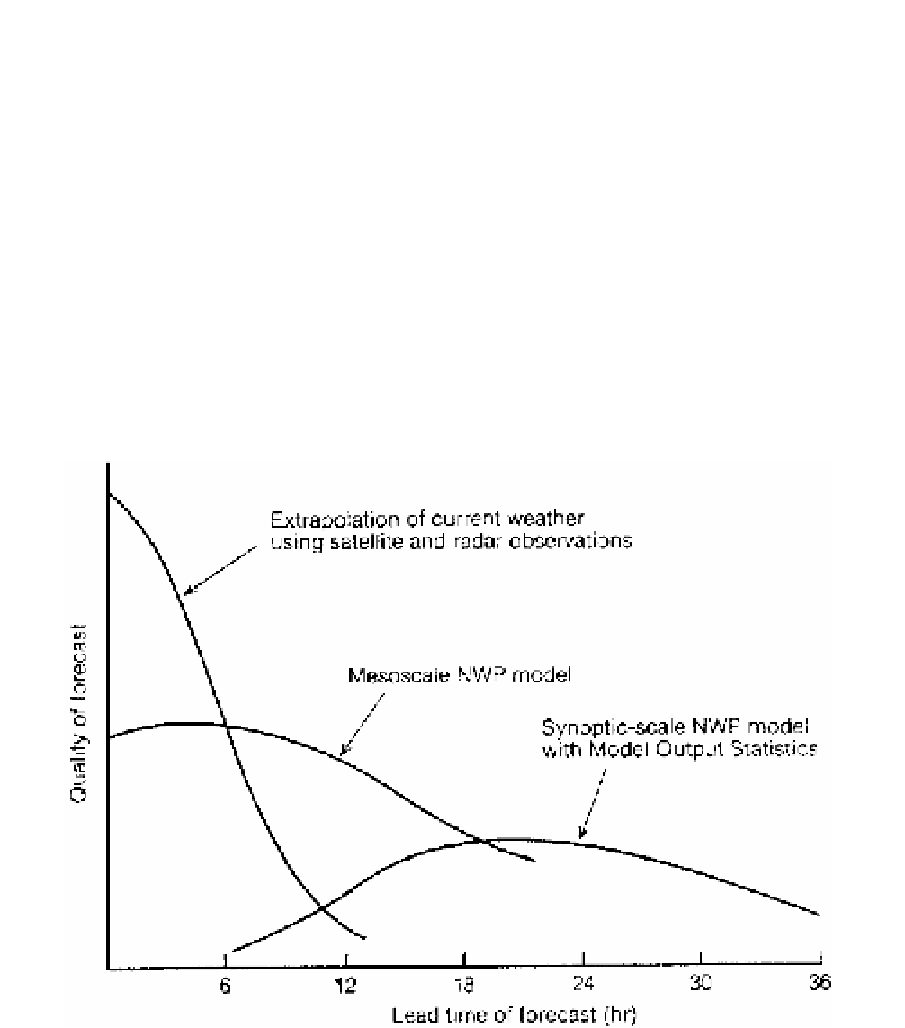Geoscience Reference
In-Depth Information
Whilst current, operational NWP models are now beginning to resolve important processes
such as convection (Lean et al., 2008), their predictive skill generally remains very limited at
the convective scales. Furthermore, current computational constraints restrict their
operational forecast update cycles to hours, whereas convective phenomena typically
exhibit life times of tens of minutes. Thus, NWP-based forecasts of local weather (Browning,
1980) have tended to be rather poor and their use for local forecasting has, until very
recently, often been limited to general guidance at the regional scale.
From the 1960s onwards, the availability in near real time of increasingly sophisticated,
spatially contiguous, radar and satellite observations, particularly of precipitation or proxies
for it, offered the prospect of very short range, local forecasting by extrapolation - the
concept of exploiting persistence, either in an Eulerian or Lagrangian reference frame
(Germann & Zawadzki, 2002), to make weather predictions with sufficient rapidity to
circumvent the perishability of the data. Browning (1980) clarified the relative merits of
extrapolation nowcasts and NWP forecasts (see Figure 1), suggesting that the former were of
superior accuracy up to 6 hours ahead.
Fig. 1. A schematic diagram after Browning (1980) conceptualizing the relationship between
forecasting methodology, skill and forecast range.
The predictability of extrapolation-based precipitation nowcasts and the forecast range at
which these nowcasts must hand over to NWP to achieve optimal predictive skill have been
explored by a number of authors (e.g. Browning, 1980; Zawadzki et al., 1994; Germann &
Zawadzki, 2002; German et al., 2006; Bowler et al., 2006). Recent implementations of
convective scale NWP model forecasts are now reducing the useful range of extrapolation-
based nowcasts to a few hours ahead, as discussed later in this Chapter.

